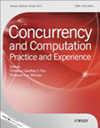With the rise of social media and the spread of a large number of pictures on the Internet, protecting data privacy and verifying copyright has become hot research. A common method is to use digital watermarking. However, the existing blind watermarking methods only consider embedding the watermark in the image itself and ignore the fact that the attacker can remove the watermark through other shooting devices. Therefore, to solve this problem, we propose an image watermarking method based on few-shot learning. We use an autoencoder to learn the embedding and extraction of watermarks. Then, we propose a framework named Simulated Candid Shooting Layer (SCSL). The SCSL simulates a variety of candid scenes as noise data using meta-learning and enhances the robustness of image watermarking. Experiments show that the proposed method is superior to the state of the art in watermarking technologies in both robustness and invisibility of watermarking. Specifically, it achieved an improvement of over 8% in evaluation metrics against JPEG attacks. The proposed SCSL framework further enhanced these metrics by more than 5%.


